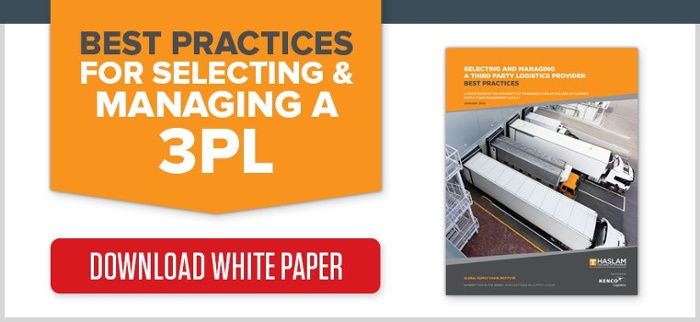Is anything as over-hyped as the Internet of Things (IoT) right now? There is so much information about how it will someday transform business processes, provide the insight to drive efficiencies, and improve the bottom line…someday.
But how do you get from the hyper-enthusiasm for the technology to making it work for your organization?
The truth is, there really is a strong business case for implementing systems using IoT today, as long as you look at it realistically — and the supply chain is an ideal arena for the operational efficiencies, operational cost reductions, and increased productivity IoT can deliver.
Here are ten easy steps to IoT success in optimizing your supply chain operations:
-
Identify your top supply chain challenges
It is easy to get wrapped up in the bells and whistles of the technology and lose sight of what you ultimately need to achieve. The first step is identifying the top five to ten supply chain challenges you are trying to solve. What are the issues that are costing money, impacting customer service, or delaying deliveries? IoT is all about connected devices gathering, analyzing, and sharing data. Identify the challenge that better data can solve and focus on those.
-
Review the current IoT technology
There is great technology available to harness the power of IoT, but it may not be directly in your industry. For example, Kenco’s Innovation Labs found a product in Europe that was being used to accurately track medical devices and saw an application to use the same technology to track inventory in warehouses. Take a look at everything out there and see if there is a fit for you. This is one area where it helps to have a partner, like Kenco, or an analyst who tracks current solutions to stay ahead of trends. They can help guide you toward solutions that fit your specific challenges.
-
Calculate the potential ROI
Your supply chain challenges have a specific cost to your organization. To sell this into your organization you need to have a good idea what the ROI will be. Quantify what that cost is and determine what actionable information IoT can provide to alleviate the problem. How are you going to analyze the significant increase in data? What is your estimated return on investment?
-
Conduct a limited rollout as a proof of concept
Instead of jumping from concept to full implementation, conduct a limited pilot program as a proof of concept. Even automating 10,000 square feet of the warehouse is a good trial to prove it works. Then quantify the results. Is the data what you thought it would be? Did the pilot prove the concept was viable?
-
Partner with your IoT vendor
Find a good IoT technology vendor and partner with them — especially at the proof of concept stage. A good vendor should provide discounting for a pilot in return for the promise to use them for the entire roll out. They can also provide industry and their own benchmarks to help establish your baseline ROI metrics for both the pilot and the complete rollout.
-
Make sure your data is actionable
Before you implement a complete solution, make sure your data is compatible with your company’s current systems and is actionable. You need to build a team from the business, IT, and financial groups to understand the implications of a full IoT rollout. If the systems can’t work with the data, there’s no point in implementing IoT. For example, if there are sensors to detect when warehouse bins are empty, but the data does not trigger an event in the WMS, then the data is not actionable, which makes it useless.
-
Get everybody on board
A good IoT implementation means significant change in work processes — and people do not like change. So while you may be excited about what IoT can deliver, there are a lot of people in your organization who will view it with trepidation or outright hostility. Change is difficult, so you need to manage it and make everyone feel involved in the change. Get everyone on board — from the warehouse floor to the executive offices — and make them feel part of the team.
-
Conduct thorough analytics.
You’ve done a full implementation and everything is running smoothly, so your work is done, right? No, you need to do a thorough analysis of what you just did. Stop and measure against what you thought would happen. You need final analytics to prove you got it right — or maybe that it was even better than planned. This is an important step — don’t miss it.
-
Where can you take it next?
Once everything is connected via IoT, you can easily layer more on top. Look at other challenges in your organization where having more actionable data could make a measurable difference. The incremental costs of adding to the system should be easy to justify as long as you, again, calculate the ROI up front and conduct the end analytics to provide proof of the benefits to your organization.
-
Apply your human resources more effectively
Finally, you’ve automated as many of the routine functions as possible and taken the mundane human interaction out of your supply chain processes. Now is the time to use those people to do the higher cognitive functions they would rather do anyway. This should be part of your vision from the beginning — by freeing people from tasks that can be easily automated, you can better utilize them to provide the intelligence to even further improve your supply chain processes.




